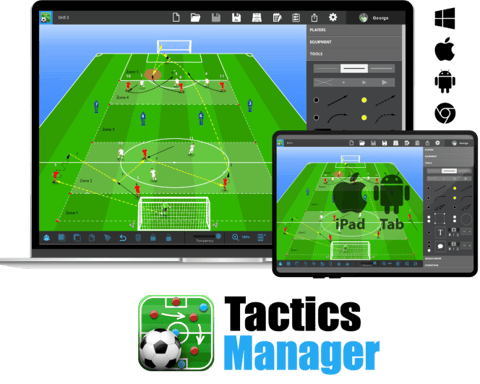Throw in drill with combinations to 2v2+1 SSG
Throw in drill with combinations to 2v2+1 SSG
SMALL SIDED GAMES2V2THROW INS
10/23/20242 min read

Use For 5% Discount - AFL-LWZY
Setup
Area: 10x10 meters with two small goals on opposite ends.
Players: 2 teams of 2 (2v2) with one neutral player (+1).
Equipment: Bibs, cones, footballs, and small goals.
Objective
Practice throw-ins in the defensive third to transition play effectively.
Focus on accuracy, timing, and decision-making under pressure.
Create opportunities to switch play and build attacks.
Key Coaching Points
Thrower Technique:
Deliver the ball with height, power, and accuracy to enable control.
Aim for the feet or chest of teammates to facilitate a smooth return pass.
Receiving Player:
Position yourself effectively to receive and shield the ball under pressure.
Use one-touch or two-touch play to redirect the ball and retain possession.
Team Movement:
Create angles by moving into space to support the thrower.
Look to switch the play quickly to exploit gaps in the defense.
Game-Like Decisions:
Assess options rapidly: play forward, switch, or recycle possession.
Communicate clearly to ensure cohesive play.
Instructions
Basic Drill:
Start with the thrower delivering the ball into the grid to a teammate.
The receiving player combines with another teammate to play back to the thrower or switch the direction of play.
2v2+1 SSG:
Transition into a 2v2+1 small-sided game.
Players apply throw-in principles while maintaining possession and attempting to score in the small goals.
The neutral player provides an additional passing option, supporting the attacking team.
Progression:
Add a defender to pressure the thrower immediately.
Introduce a time limit to increase intensity and decision-making speed.
Questions for Players
What adjustments can you make to create better angles for the thrower?
How does body positioning affect your ability to receive and switch the ball?
When is it better to switch the play versus playing forward?
What are the cues to exploit defensive gaps during a throw-in?






